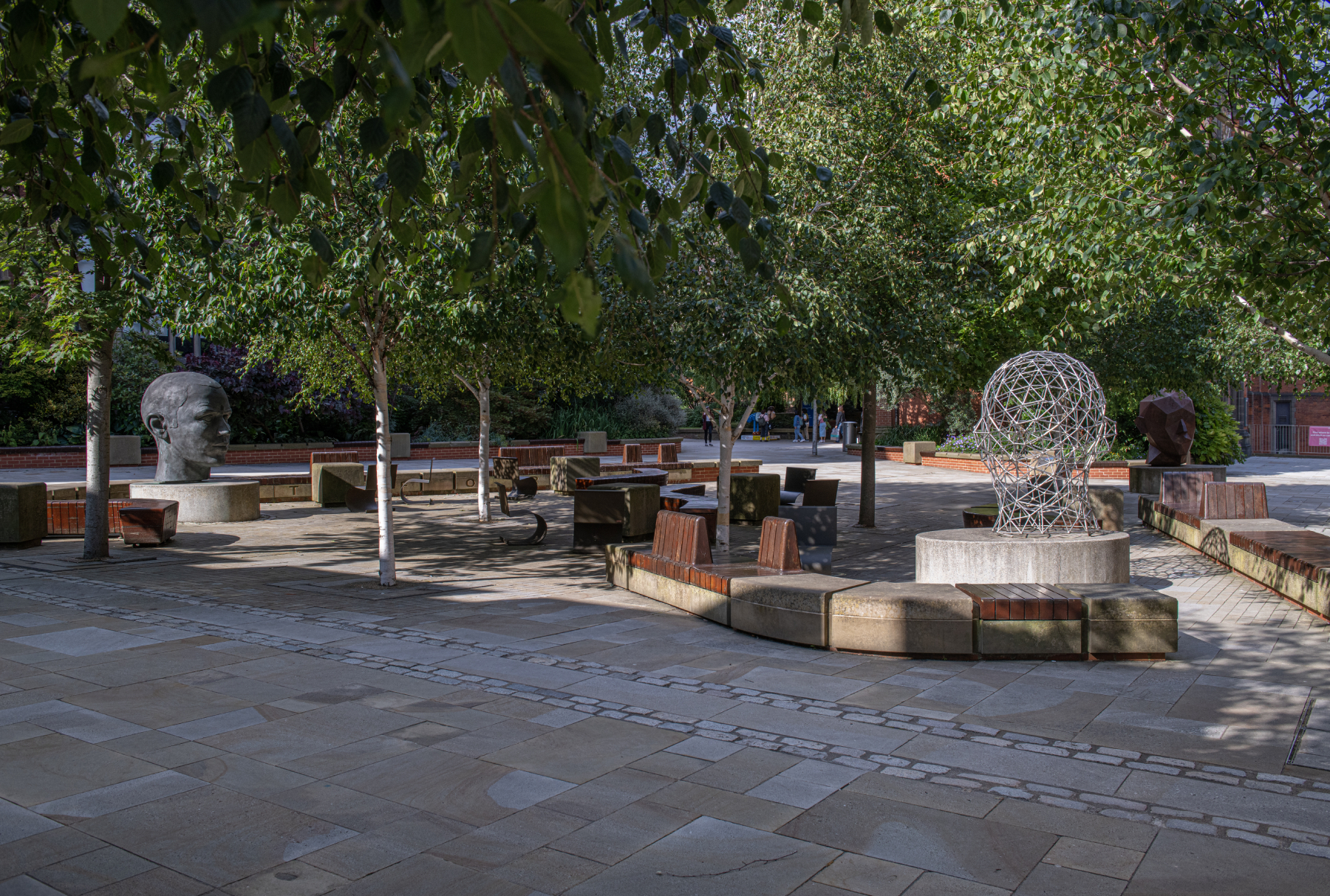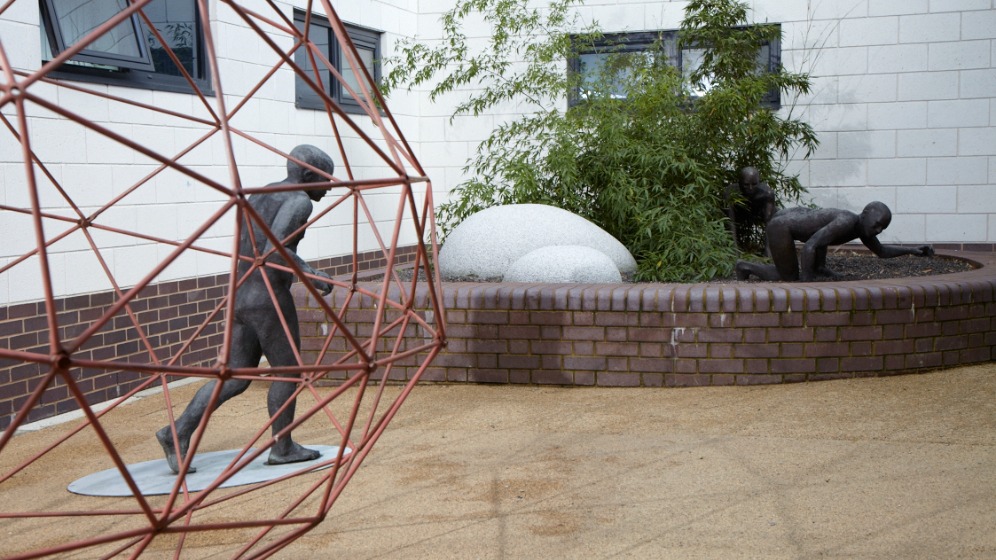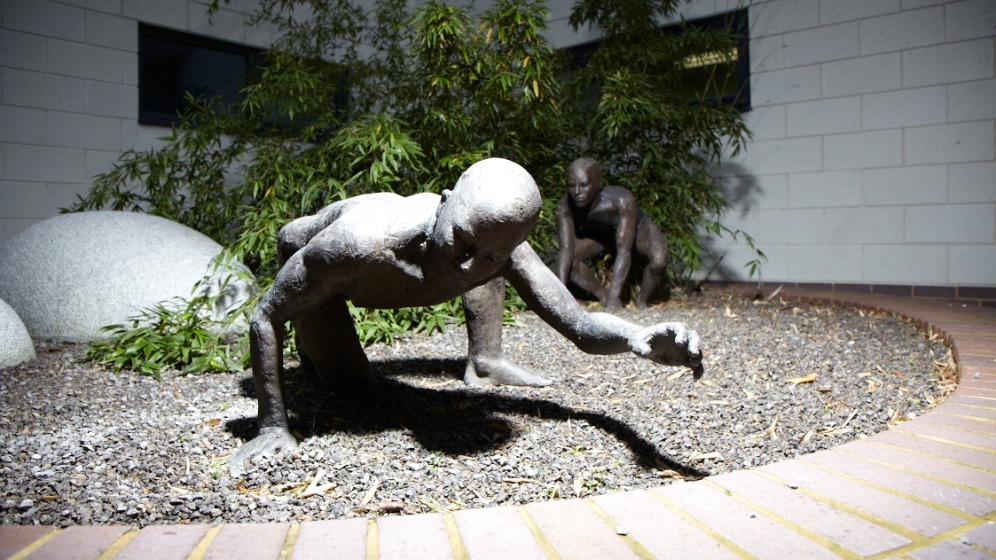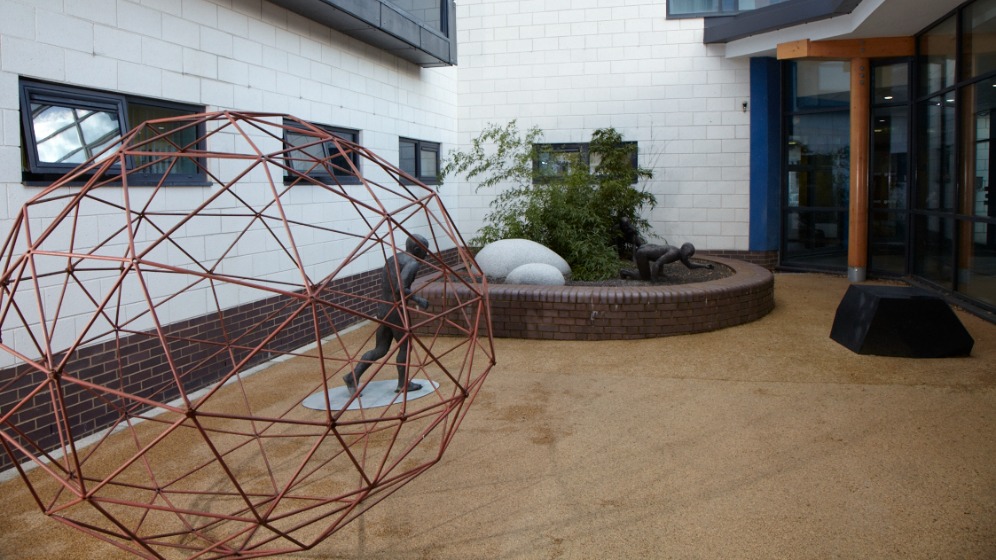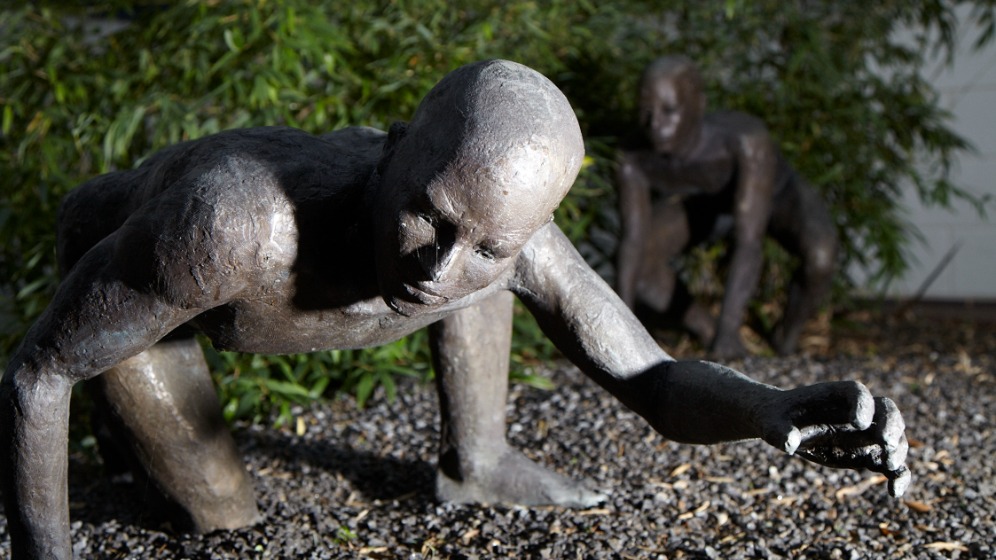Being Human by Joseph Hillier
Being Human explores the human form from a unique standpoint.
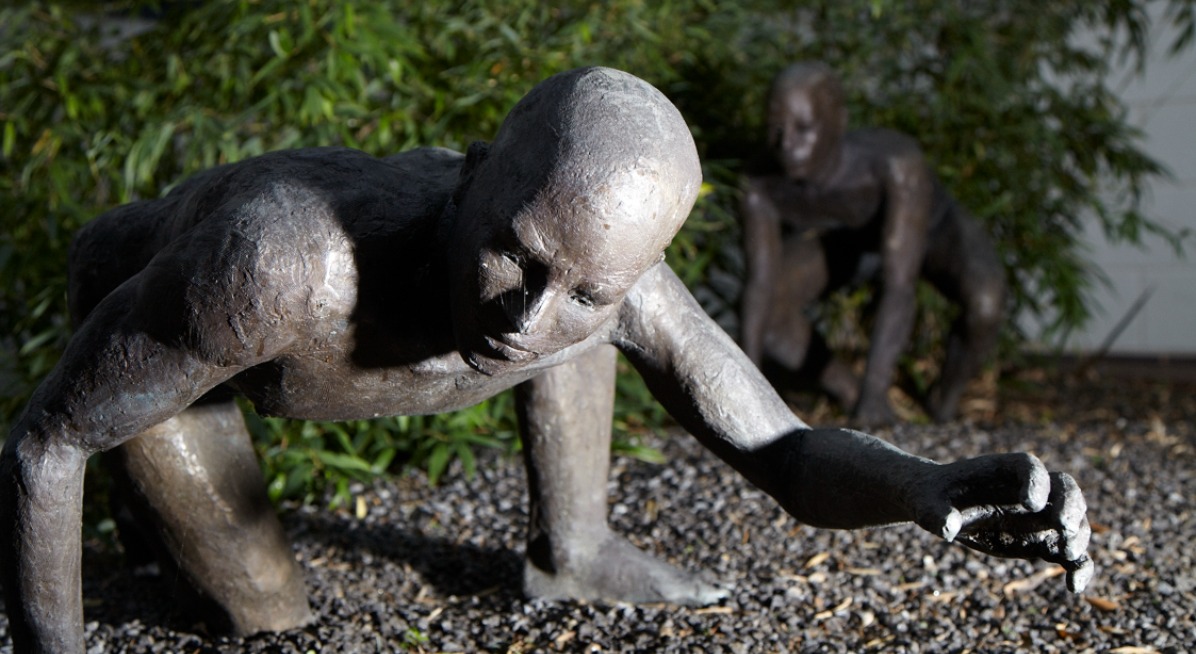
The sculptures
Joseph Hillier’s Being Human is a complex work, comprising five large sculptures. Two of the sculptures can be found in the Newcastle University Biomedical Building Courtyard on the Campus for Ageing and Vitality. This purpose-built campus can be found in the west end of the city, on the site of the former Newcastle General Hospital.
Being Human depicts the human form, sparking conversations around the topics of evolution, movement and body. The deliberate 20% reduction from life-sized sculptures gives these statues an intriguing and almost otherworldly feel.
The unusual positioning of the human forms on all-fours lends them an almost animalistic quality, with the outstretched hand of one statue seeming to communicate a link back to our evolutionary ancestors. A reminder that, despite our differences, we are all human.
The process
Hillier takes a unique approach to sculpting and art. Writer on art, , has said of Being Human: “Joseph depicts his own body in his figurative work, but has a different approach from other artists who use bodies to cast human form.
“For the group of sculptures under the collective title Being Human, he filmed himself from four viewpoints – from the front, both sides and from the back – then selected single frames from the footage.
“He then made drawings and crafted his model at 80% of his own height and volume. This may seem laborious work. Why not just take a cast and then reduce the form by 20%? His reasons are twofold.
“Joseph finds that the resulting figure has more life in it, as it is freely and expressively formed, and that the small percentage reduction from life-size to slightly less, gives the figures a strangely animal quality, as though they were part of the life chain that links us to the apes.”
The artist
Hillier was born in Cornwall in 1974. He began his studies at Falmouth College of Art, then achieved a place at Newcastle University. After graduation, Hillier held a Fine Art research post at Newcastle University for a number of years, while creating a series of exhibitions in the UK.
Hillier received the ‘Year of the Artist Award’ from the Arts Council of England in 2000. He also completed his earliest publicly-sited projects during this year. In 2001, he won a scholarship and teaching role at Tulane University in New Orleans, where he completed an MFA and taught on the BA for a year.
This sale funded Hillier’s first studio in London, where he completed the installation Generation. He held his first solo show in London at APT Gallery in 2005.
Hillier also completed a further installation for Newcastle University, entitled I think you imagine, I imagine you think, which is situated in our Business School.
